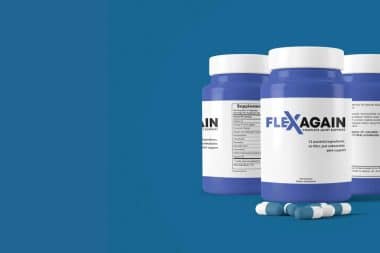Building muscles is essential for overall fitness and health. Excess fat is associated with weight gain and an unhealthy lifestyle. As much as possible, you have to build your muscles and reduce fat for a healthier and stronger body. Strengthening your muscles and cutting fat starts with checking what you eat and ensuring that you exercise regularly.
In this article, you’ll learn the best tips on how to keep your muscles and cut down fat.
Take the Right Supplement
Supplementation is a must, especially if you’re not getting enough nutrients from the food you eat. Food supplements contain minerals, vitamins, and natural botanicals. They also contain active ingredients required for metabolism, hormonal responses, and regulation of fat storage.
Take an FDA-approved lose fat and gain muscle supplement to maximize your athletic performance and aid in the rapid cutting of unwanted fat safely. Look for the following active ingredients when choosing the right supplements for your health:
- Forskolin Extract: It signals the body to break down fat by increasing vital cyclic adenosine monophosphate (cAMP) levels, which signal hormonal messengers that help build muscle and reduce fat.
- Calcium HMB: It’s a compound that hinders muscle breakdown so you can perform at your best and burn more calories to get lean faster without losing muscles.
- Green Tea Extract: It provides a hit of catechins, a fat-fighting antioxidant which helps improve metabolism.
- Chromium Picolinate: It stops fat storage, impacts levels of insulin, and improves energy levels while keeping your hunger and cravings in check.
- Capsimax: It aids in the release of epinephrine and norepinephrine or fat-fighting hormones — including, which promotes the fat breakdown before, during, and after training.
Schedule Muscle Recovery Time
Muscle recovery period refers to the time the muscles are given to rest and return to their normal condition and function. Muscle soreness usually peaks two days after training or exercise, so you need to rest your muscles for at least 48 hours to allow recovery. By doing so, you can prevent injury and help keep your muscle while reducing fat at the same time.
Muscle recovery differs from one person to another because of factors such as age, weight, routine activities, and medical condition. For instance, older people may experience slower muscle recovery and growth than young adults.
Check out the following muscle recovery tips:
- Give yourself enough time to recover in between workouts, especially if you’re doing intense workouts and eating fewer calories.
- Lifting weights provides a metabolic lift after exercise or training since the body is trying to help muscles recover.
- Get plenty of rest and sleep to restore your energy levels.
- Drink plenty of fluids to hydrate your body properly. Hydrate before, during, and after intense physical activities.
Develop a Good Exercise Routine
A diverse exercise plan will help you keep your muscles and cut on fat. Include cardio, resistance, and strengthening exercises in your daily exercise routine to help you achieve your goals. Some good examples of cardio exercises you can try are running, cycling, and boxing.
Reduce body fat by combining cardio exercises like jumping rope, running on a treadmill, or high-intensity interval training (HIIT) exercises with resistance and weight training. Because HIIT involves short but powerful periods of intense exercise, followed by low-intensity exercise or rest, muscle recovery is smooth. A good example is doing lunges, squats, bench press, and push-ups with weights.
Here are some expert tips to help you develop a good exercise routine:
- Increase Workout Intensity: By increasing your workout intensity, you can burn more calories and build your muscles and strength effectively. It’s one way to push the muscles to their maximum capacity.
- Exercise Combination: Perform strength training twice or thrice a week, like a combination of bodyweight exercises, weightlifting, and resistance band exercises. Yoga, tai chi, and Pilates are great exercise options to vary your physical activities. Begin with low weight loads and gradually work your way up to carrying heavier weights with more repetition to prevent injury.
- Use Fitness Apps: Using fitness apps can help you find the suggestions and insights on different exercise routines and diet plans with tracking capabilities.
Eat Healthy Food
Eating right involves more than just weight management. The human body requires the right amount and balance of nutrients, like vitamins and minerals, to ensure that your muscles are functioning properly. Instead of focusing on calories and fat on the food you consume, it’s crucial to consider how your meals affect your body as a whole.
When your bones become brittle, your muscles also become weaker. That’s why a healthy diet should ensure adequate amounts of calcium and vitamin D, which are key nutrients for stronger bones and teeth. Adults need at least 1,000 milligrams of calcium and 200 international units or IU of vitamin D a day.
Here are the recommended foods to help you get the right amount of calcium and vitamin D:
- Yogurt: Yogurts are vitamin D fortified and could get you 30 percent of your required daily calcium intake.
- Milk: Drinking vitamin D fortified and fat-free milk (an eight-ounce glass) provides 30 percent of your daily calcium dose.
- Salmon and Tuna: These foods are good for the bones. Three ounces of salmon contains more than the required daily vitamin D dose.
- Spinach: Consume one cup of cooked spinach to satisfy 25 percent of your daily calcium dose.
- Lean Meats: Pork, chicken, and lean cuts are rich in protein, which is required by your muscles and bones.
- Eggs: This food is a great source of protein and calcium, which are nutrients required by your muscles and bones.
Talk to Fitness Experts
The best person who can assess your overall health is a physician, trained to help manage and prevent the risk of chronic diseases or other medical conditions. It would also help consult an exercise physiologist, a health professional who uses nutritional modalities and exercise to help people become healthier.
With a holistic approach, you’ll reap the best benefits from your exercise routine. Your physician, fitness coach, dietitian, or nutritionist can work together to help you develop the ideal health and fitness plan.
Conclusion
Keep your muscles healthy and strong while reducing fat by eating nutritious food and taking proper supplementation. It’s also essential to develop a good exercise routine and take time for muscle recovery to avoid losing muscles when cutting down on fat. This will also help prevent muscle injury caused by intense training.








Reply